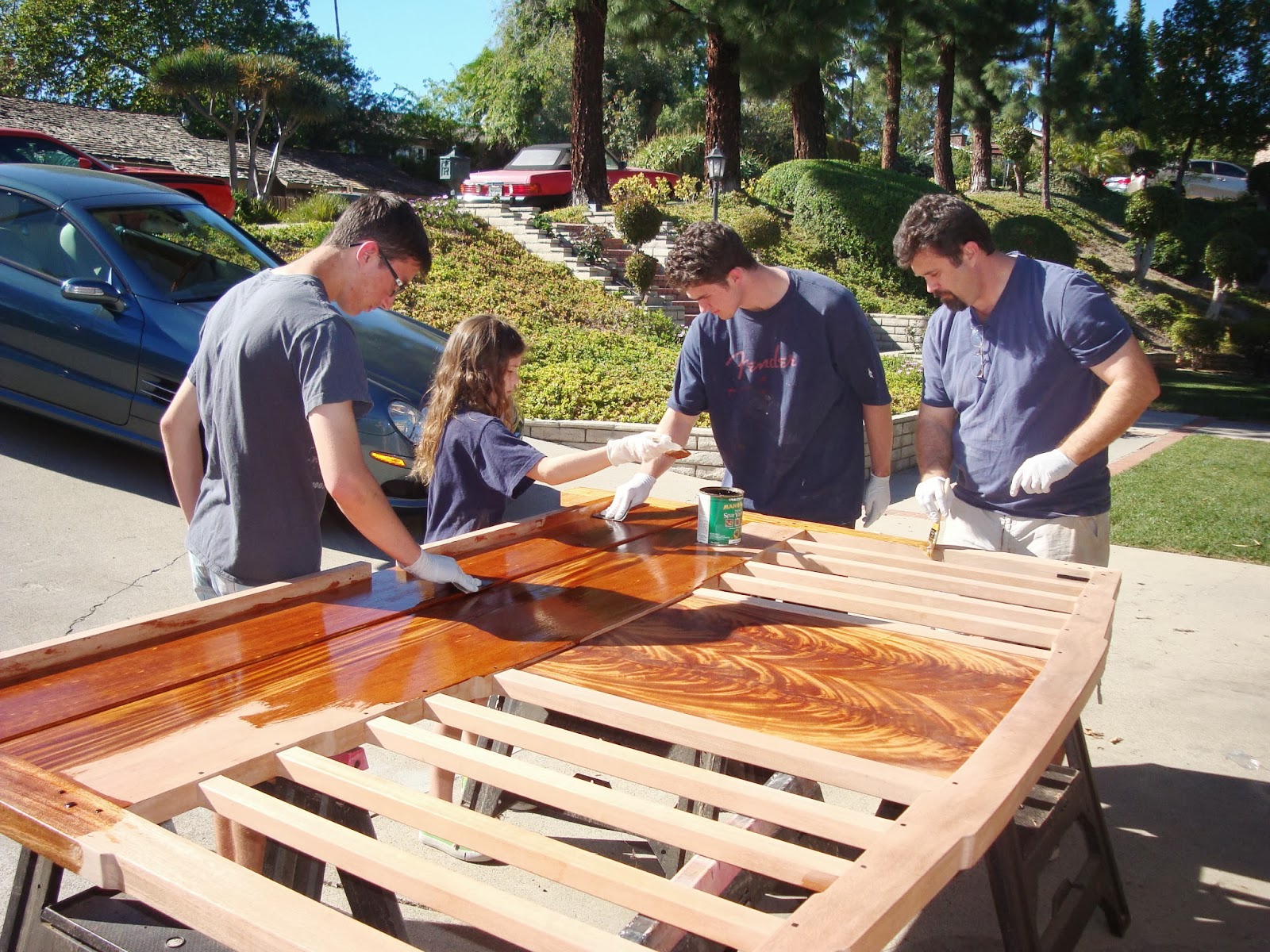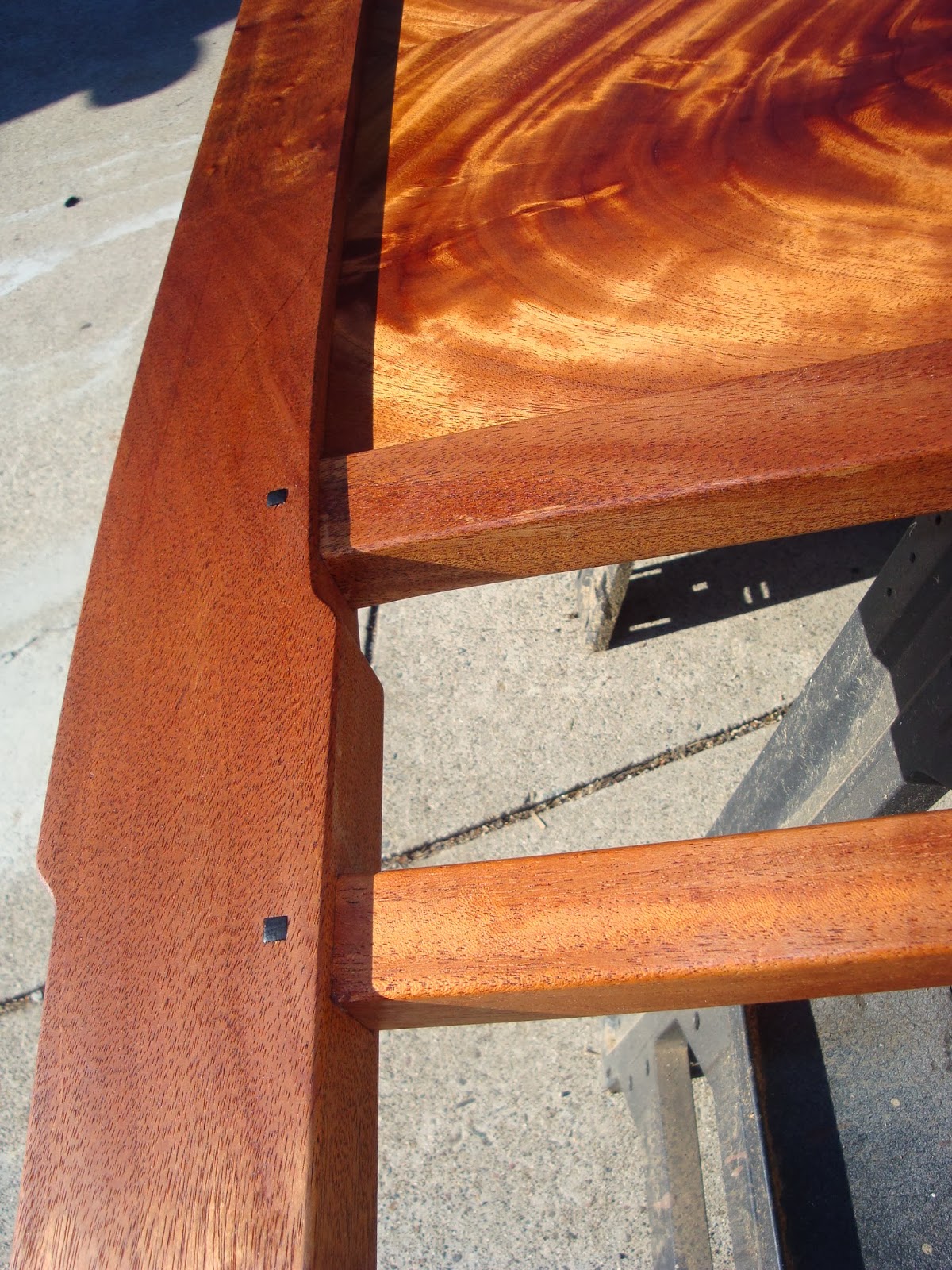The headboard is finally all glued up!
We had a few challenges along the way.
First, we glued up the three rails on the bottom. Unfortunately, there were enough humidity changes that the middle board had stretched to the point it was longer than the other two boards, such that the boards were perfectly flush on the right but not on the left. See the little ledge where the two boards meet?
The result is that there's a little gap when the leg is on. Can't have that.
I adjust the length of the board with a shoulder plane and a chisel. The shoulder plane makes the edges perfectly flat, and the chisel gets the excess material that is between the tenons.
Once the mortise and tenon joints were perfected, the next step before the glue-up was to put some shellac on the veneered panel. The rest of the headboard will get a hand-rubbed oil finish, which can be done after glue-up, but this panel must have a finish that provides better protection against moisture changes, to keep the veneer from splitting. So it'll be a shellac finish, which must be applied now. I brushed on a couple coats of shellac first.
I let the shellac dry for a week, and then sand it and apply some more finish using a french polish technique.
Next step was to glue it all up. Jill and I did that Saturday morning. Unfortunately, it did not go smoothly. We ran into some snags, and nearly had a significant disaster. Fortunately, Jill was pretty even-keeled and we got it squared away without any problems. I didn't get any pictures of the glue-up itself, but we got a glued-up headboard to show for it.
With the glue-up finished, I pinned the mortise and tenon joints. These joints are strong enough that pinning is not really necessary, but the pins will guarantee that these joints are still holding strong 100 years from now. I start by drilling a 1/4" hole in the middle of the mortises for the ebony plugs. I drill deep enough to go through the tenons but not all the way through the leg.
I then take a piece of 1/4" oak dowel with a little glue and drive it into the hole with a drift pin and a hammer.
Next, it's time to trim those "horns" off the legs and upper rail, and to trim the inner portion of that joint to create a roundover in the inner corner. We start by placing the template over the corner and tracing the profile.
A jigsaw trims away the waste.
I clamp the template back on and use a router with a flush trim bit to get a perfect edge on both sides. I use a rasp and file to clean it up, and then sand it clean.
At the ledge/upper rail joint, there will be an ebony spline on the outer and inner edges. I cut the mortise for the inner spline before the glue up, but now it's time to cut the channel for the outer spline. I do that with a router using a 5/16" slot-cutting bit. I trim it up with a chisel and it's ready for the ebony.
I trim some ebony to be exactly the thickness of the channel and glue it in place.
Once I have the ebony glued into the inner and outer edge, I trim it with a special bit that William Ng designed specifically for trimming Greene & Greene style ebony splines. It has a pair of bearings above and below the cutter, and the bearings are a little wider than the cutter so they leave the ebony proud of the mahobany.
And here's what it looks like after trimming the ebony.
Next time, I'll finish the splines on the left side, then a lot of little details (and boatloads of ebony plugs).


















































